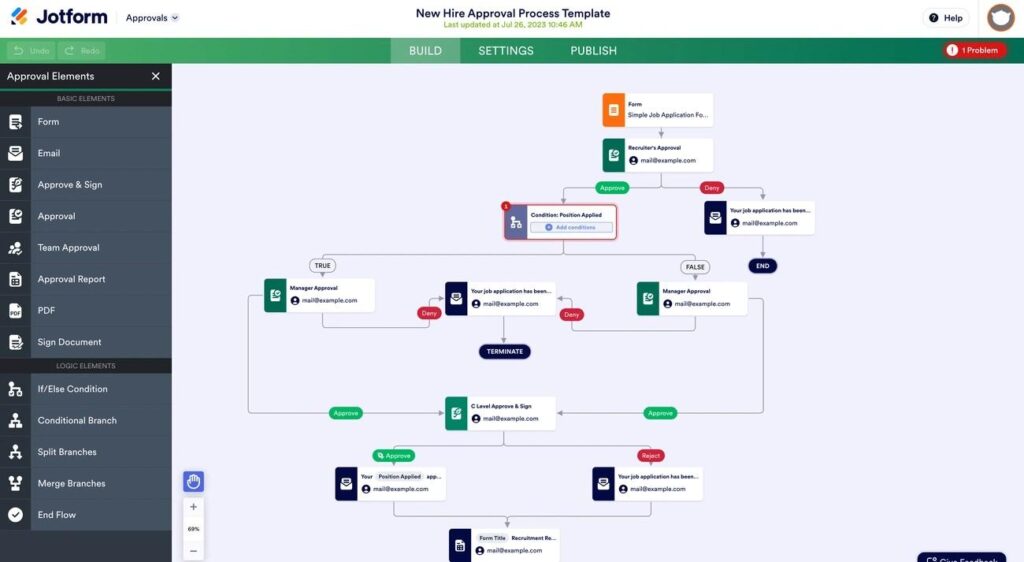Email management strategies can help professionals reclaim more than 11 hours every week. Yet most people still spend nearly a third of their workweek reading, sorting, and responding to messages instead of focusing on meaningful business growth.
We all know the feeling of an inbox overflowing with messages that seem to demand immediate attention. The pressure to respond instantly often turns into a reactive habit that steals valuable hours every day. Research shows that 19 percent of professionals check their inbox the moment a message arrives, a habit that interrupts concentration and derails entire workdays.
It is no surprise that effective email management has become essential. In fact, 61 percent of professionals now rely on modern tools to organize their communication, streamline workflows, and manage projects more effectively.
In this article, you will discover practical strategies to move closer to “Inbox Zero.” You will learn how to reduce clutter, set up smart automation, and create healthy boundaries around your inbox. These proven techniques have already helped thousands of professionals regain control of their time, and they can help you too.
Clear the Clutter First

Image Source: Our Happy Hive
You need a clean inbox to manage your emails better. Start by clearing out the digital mess that piles up before you try any fancy systems or rules.
Unsubscribe from emails you don’t read
Your inbox gets clogged with promotional emails and newsletters. The time has come to cut ties with senders you keep ignoring. Gmail makes it easy – just tap “Unsubscribe” next to the sender’s name when you open an email. Tools that help you remove yourself from multiple lists at once can handle stubborn inbox clutter.
Delete or archive old messages
Your inbox cleanup gives you two choices: delete or archive. Gmail permanently removes deleted emails after about 30 days. Archiving works differently – it moves emails out of sight but keeps them available under “All Mail” or in a separate folder. This works great especially when you have important emails you might need later.
Here’s how to start:
- Make a “holding folder” to store all emails while you organize
- Set up an “Archive” or “Completed” folder for old emails and finished projects
- The OHIO method might help – Only Handle It Once means you reply, delete, or move an email right after opening it
Use folders and labels to organize
A good folder system (in Outlook) or labels (in Gmail) helps sort incoming messages quickly. Outlook lets you create folders with a right-click on your inbox and selecting “New Folder”. Gmail’s labels offer more flexibility – you can tag one email with multiple labels.
The Stack Method suggests action-based categories that work better than topic-based ones. You might want to create “stacks” like “Immediate Action,” “Awaiting Response,” or “Long-Term Follow-Up”.
A clean inbox creates the perfect starting point to explore advanced email management techniques in our next section.
Automate and Delegate Smartly

Image Source: HubSpot Blog
Email automation should be your next powerful strategy after organizing your inbox. You’ll spend less time on manual work and get consistent handling of incoming messages. This gives you more time to focus on what really matters.
Set up filters and rules
Your incoming emails can be sorted automatically with filters based on specific criteria. These filters route messages to appropriate folders without you lifting a finger. Gmail users can create filters by clicking “Show search options” in the search box, entering criteria, and selecting “Create filter”. Outlook users should right-click a message, hover over “Rules,” and select “Create rule” to move messages from specific senders to designated folders automatically.
The system processes filters from top to bottom. The top filter wins if two filters match the same email. You can also export and import your filters, which makes it easy to share with team members or transfer between accounts.

Use templates for common replies
Templates are a great way to save time on responses you send often while keeping your message consistent. Teams that use email templates can focus more on developing solutions instead of writing repetitive responses. Support experts say templates help reduce mistakes and keep messaging consistent across all email communications.
Templates offer these benefits:
- Your team’s responses stay consistent
- You don’t have to write every message from scratch
- Customers get faster responses and stay happier
Today’s email systems come with AI features that can suggest replies or handle routine messages for you.
Integrate Your Tools for Seamless Productivity
Your productivity jumps when you connect your email with other tools. IFTTT (“if this, then that”) and Zapier let you build custom “recipes” that automate action sequences. You could automatically create calendar events from emails with specific keywords or send emails when new tasks pop up in your project management app. Tool integration puts all your communication in one place and reduces missed messages.
Your emails can become tasks right away when you sync with task management apps, so nothing gets overlooked. A more advanced option is using salesforce and outlook integration, which ensures your client communication and CRM data stay perfectly aligned without extra manual work.
Prioritize and Process Efficiently
Email management’s life-blood lies in efficiency. Your inbox needs a system that works after you’ve hosted and automated it.

Use the two-minute rule
David Allen’s “Getting Things Done” introduces the two-minute rule as a simple way to handle small tasks. You should tackle any email right away if it needs less than two minutes of your time. Small tasks won’t pile up and become daunting this way.
This rule brings several benefits:
- Quick action prevents task buildup and procrastination
- Mental clutter disappears to improve focus
- Quick wins build momentum
- Larger tasks get more time, which optimizes productivity
The average worker looks at their email 74 times each day, which breaks their concentration frequently.
Batch email time into your schedule
Your inbox shouldn’t demand constant attention. Set specific times to process emails instead. Studies show that professionals who check emails 2-3 times daily stay focused and face fewer interruptions.
Natural breaks in your workday make perfect email-checking times. Most people find success by checking messages three times: morning, post-lunch, and before heading home. Research proves that “batchers” work better, stress less, and feel happier overall.
It’s worth mentioning that only 20% of emails need immediate responses. The other 80% can usually wait. A smart email processing system will put you back in control of your day.
Set Boundaries and Maintain Control


Image Source: WiseStamp
Setting clear boundaries is one of the most effective ways to manage email and prevent it from taking over your day. A strong system does more than just organize messages; it helps you protect your focus and set the tone for how others communicate with you. Research shows it takes more than 23 minutes to regain concentration after a distraction, which is why email alerts can be so disruptive.
Here are practical ways to set boundaries and maintain control:
- Turn off notifications: Switch off phone alerts, disable desktop pop-ups, and set specific times to check email so you can manage it on your terms.
- Communicate your email hours: Let colleagues know when you check messages, use auto-replies to confirm response times, and add a note in your signature to set clear expectations.
- Use snooze and schedule features: Take advantage of tools like Gmail’s snooze or Outlook’s scheduling options to handle messages at the most productive time and ensure nothing important gets lost.
Conclusion
Mastering email management is less about chasing perfection and more about creating systems that give you back control of your time. By clearing clutter, using smart automation, setting boundaries, and building healthier habits, you can transform your inbox from a constant distraction into a reliable tool that supports your work.
Inbox Zero is not just about an empty inbox, it is about the freedom to work with clarity and purpose. With consistent practice, the strategies in this guide can help you build a relationship with email that feels manageable and productive rather than overwhelming. Your inbox should serve you, not the other way around, and with the right approach, it will.
Keep the conversation going…
Over 10,000 of us are having daily conversations over in our free Facebook group and we’d love to see you there. Join us!

